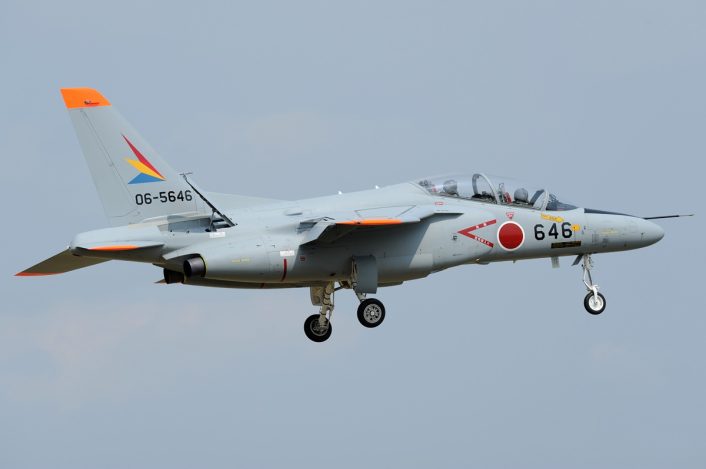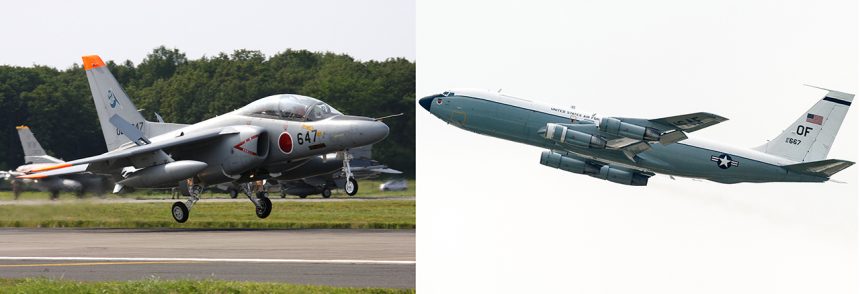No traces of radioactive materials, including xenon gas, were detected following North Korea’s latest nuclear test. Here are the aircraft that helped determining that.
On Sunday Aug. 3, North Korea conducted its sixth and most powerful nuclear test. According to Pyongyang the test involved a hydrogen bomb that can be loaded onto a long-range missile.
The test was anticipated and observed by different intelligence gathering platforms, including U.S. spyplanes launched from Japan and South Korea, whereas air-sampling equipment installed on planes, ships and land radiation detection stations was used to look for any traces of radionuclides released after the nuclear test.
South Korea’s nuclear safety agency said it has detected no traces of radioactive materials, including xenon gas, following North Korea’s latest nuclear test: South Korea’s background radiation currently remains at the usual level of 50-300 nanosieverts per hour, apparently unaffected by the North’s nuclear test, Yonhap News Agency reported.
Interestingly the air sampling activity was carried out by at least two type of aircraft.
First of all, the quite famous WC-135 Constant Phoenix “nuclear sniffer”. The WC-135C 62-3582 was tracked as it crossed the Pacific to forward deploy to Kadena, Okinawa, from where it has alsways operated in the last months.
今日の嘉手納
WC-135C 582(駐機) EP-3E(着陸)
WC-135は滅多に来ないし 撮れたのはよかった 朝とか予想外すぎるんですが pic.twitter.com/hK5gMKSW8H
— スネクマ@ (@SuneKuma) September 5, 2017
Then, the aircraft was tracked flying over Japan’s west coast in the morning on Sept. 6.
Nuke sniffer – Last position tracked an hour or so ago passing Japan’s west coast
?? US Air Force
WC-135C 62-3582 SURLY55 pic.twitter.com/3Q7uNWw3Zm
— CivMilAir ✈ ? (@CivMilAir) September 6, 2017
The aircraft is one of the two WC-135 Constant Phoenix aircraft in service today (out of 10 examples operated since the 1960s). It’s a Boeing C-135 transport and support plane derivative, operated by the 45th Reconnaissance Squadron from Offutt Air Force Base, with mission crews staffed by Detachment 1 from the Air Force Technical Applications Center.
As already reported here in the past, the WC-135 flies in direct support of the U.S. Atomic Energy Detection System, a global network of nuclear detection sensors that monitor underground, underwater, space-based or atmospheric events.
The aircraft is equipped with external flow devices used to collect airborne particulate on filter paper. The particulate samples are collected using a device that works like an old jukebox: an arm grabs the paper from its slot and moves it to the exterior of the fuselage. After exposure, it is returned to the filter magazine where a new paper is selected for use.
The mission crews have the ability to analyze the fallout residue in real-time, helping to confirm the presence of nuclear fallout and possibly determine the characteristics of the warhead involved.

The WC-135 62-3582 is the same aircraft that completed a “tour” in Europe, earlier this year, when it conducted several missions both in the Barents Sea area and in the Mediterranean Sea until mid March amid speculations that the aircraft had been deployed to RAF Mildenhall because of an alleged spike in Iodine levels around Norway. However, the “nuke hunter” plane was on a “pre-planned rotational deployment scheduled in advance,” according to the Air Force spokeswoman Erika Yepsen.
Interestingly, not only did the U.S. WC-135 aircraft flew to take air samples to test for radioactive particles. As already done in the past, Japan launched some T-4 training jets, equipped with collection pods, to gather air samples.

Actually, JASDF is able to leverage a small fleet of aircraft to perform this task: for instance, in January 2016, the day after a North Korea nuclear test, Japan deployed a C-130 Hercules airlifter and four T-4 subsonic intermediate jet trainer aircraft to gather air samples and detect radioactive particles.
To collect particles across the country, T-4 equipped with pods were launched from different bases across Japan: Misawa, Hyakuri and Tsuiki airbases located in the districts of Aomori (north), Ibaraki (central), and Fukuoka (south) respectively.
Top image credit: Ken H / @chippyho and Wikimedia Commons








